When the Tohoku earthquake and tsunami hit Japan on March 11, 2011, it dragged out a blue-and-white sampan or wooden fishing boat, with serial number MG3-44187 and cast it adrift in the ocean.
Three years later, that same boat was found shipwrecked off the coast of Taitung. It is now slumped against the entrance to the Museum of Contemporary Art, Taipei, where the curators of Co/Inspiration in Catastrophes (災難的靈視) have placed it as a symbol of the irrelevance of national borders when natural disaster strikes.
In a video playing in the museum, curator Huang Chien-hung (黃建宏) explains that the show’s thesis started with a question posed by his co-curator Yuki Pan (潘小雪): Why do so many natural disasters befall Taiwan’s eastern coast? The country experiences an average of 22 earthquakes a year, with 70 percent centered in the northeast.
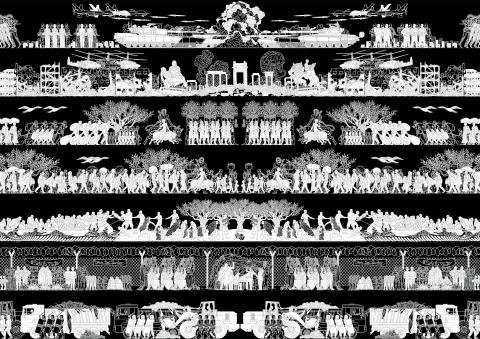
Photo courtesy of Ai Weiwei Studio
Geology aside, the curators soon found themselves up against the systems, laws and policies in place to detect and react to natural disasters, opening up the larger question of human intervention.
The resulting collection of works by 16 artists, on view at the museum until Feb. 9, examines the role of humans in catastrophic change of all kinds. They range from first responders to natural disasters to progenitors of political movements, and from victims of colonization and urban renewal to masters of their own fate.
If this all sounds very disparate, that’s exactly how it feels walking through the exhibition. While individual works contain thought-provoking nuggets, as a whole, the juxtaposition of such a wide range of topics is enough to give you whiplash. It also reduces the show’s impact.
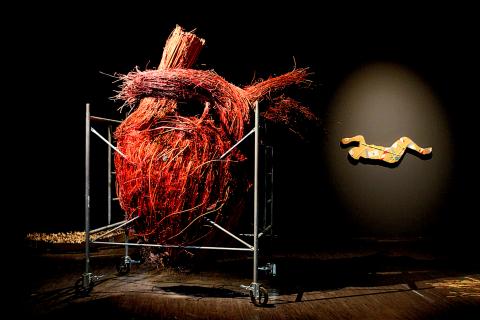
Photo: Davina Tham, Taipei Times
‘BE WATER’
But back to the sampan. A short walk away is another boat, a “Lennon ship” created by a group of Hong Kong students and sympathizers at the Taipei National University of the Arts (TNUA). It’s less a seaworthy vessel, and more a symbol of the ongoing protest movement’s mantra to “be water” and find resilience in fluidity.
The political unrest and violence that have engulfed Hong Kong are treated here as one of the many types of human-made catastrophes, and also reflect Taiwan’s preoccupation with developments in the semi-autonomous city.
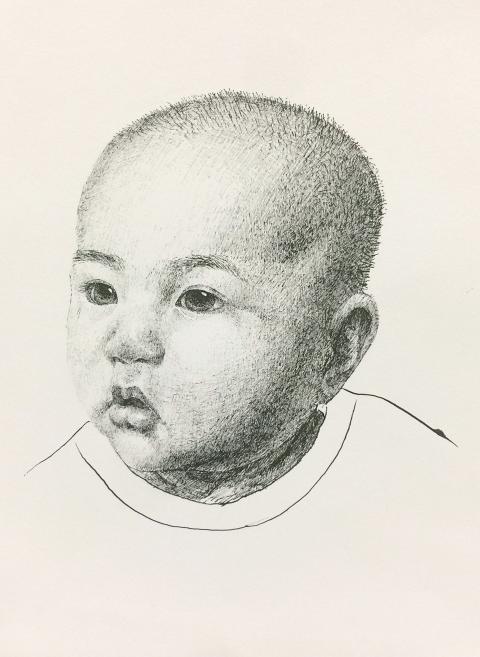
Photo courtesy of Museum of Contemporary Art Taipei
Inside the museum, the TNUA students use a timeline of protest imagery and video footage to present the movement’s ideals. It’s nothing you haven’t seen on the news — until you get to a makeshift living room where the conflict has been translated into family drama radio plays.
Through headphones, characters debate inheritance, who gets to make decisions for the family and the use of violence as a way to discipline the children. Family conflict is universal, and here it becomes a way of understanding the deeply felt beliefs of the geopolitical actors.
China-watchers will also be drawn to arguably the biggest name in this exhibition, Ai Weiwei (艾未未), the Chinese artist and activist who has run afoul of Beijing’s censors for years now. But his works focus on a different part of the world entirely — migrant crossings from the Middle East to Europe, and the nowhere lands of refugee camps.
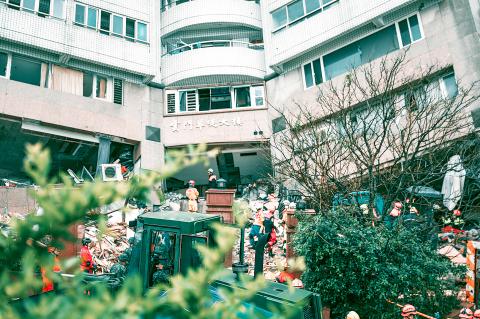
Photo courtesy of MOCA, Taipei
The tone is set by the wallpaper, Odyssey, which depicts caravans and boats of refugees in the style of ancient Egyptian art, giving them the gravitas of those paintings. In four documentaries, Ai presents in unflinching detail the lives of people who have fled war and poverty only to endure more suffering.
There are attempts to assign responsibility, particularly in the feature-length Human Flow, which spans some 40 refugee camps. Ai interviews humanitarians and experts, who discuss the effect of government refugee deals and policies that are never made with the refugee’s interests in mind.
That underscores the newness of refugee voices being given time and space in prestigious institutions like an art museum. It elicits empathy, and gives a sense of the immense geographical and historical scale of this flow of humanity. A mother trying to express her worries about her children’s future is overwhelmed with emotion and vomits into a metal can. A man points to the grave of his brother and shuffles through a deck of identity cards, pointing out the ones who have died.
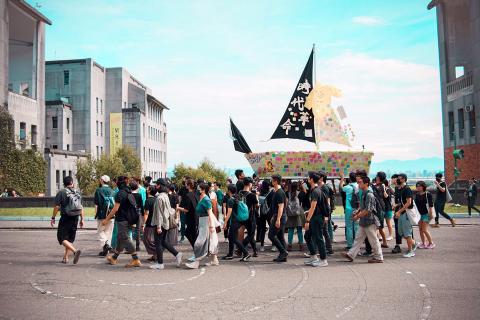
Photo courtesy of MOCA, Taipei
The exhibition also addresses Taiwan’s own history of natural disasters. The effect that such calamities have had on Aboriginal communities is particularly pronounced, and is given appropriate attention in a few works by Aboriginal artists.
Ikong Hacii renders delicate and dignified hand-drawn portraits of people from her Sediq community, whose villages were destroyed in the eponymous Typhoon Toraji. The typhoon hit eastern Taiwan in July 2001 and killed at least 200 people.
Rukai artist Eleng Luluan and Puyuma artist collective Pakavulay use traditional weaving techniques to create sculptures that comment on the destruction and reconstruction and Aboriginal communities and cultures as a result of natural disaster, but also development and central governance.
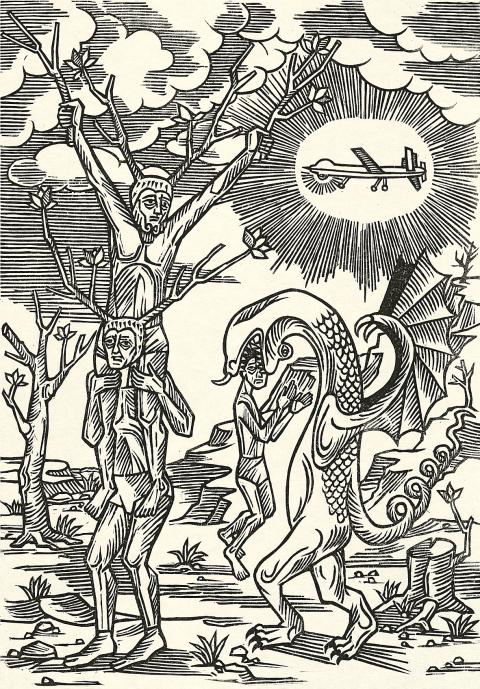
Photo courtesy of Sachiko Kazama and MUJIN-TO Production
Unsurprisingly, monumentalizing the moment of destruction and the process of reconstruction is a repeat motif in this exhibition. The most literal depiction of all comes from Tseng Hsiang-chi (曾湘淇), whose paintings show demonic creatures looming over apocalyptic landscapes, confronted by small human figures bathed in light.
The scenes recall Tiananmen’s Tank Man, or the Charging Bull and Fearless Girl statue on New York’s Wall Street. In the artist’s words, they are meant to celebrate the heroes who carry out rescue and reconstruction missions. But the exhibition does its best work when it stays away from such valorization, and goes deep into the trauma and discomfort of catastrophic change.
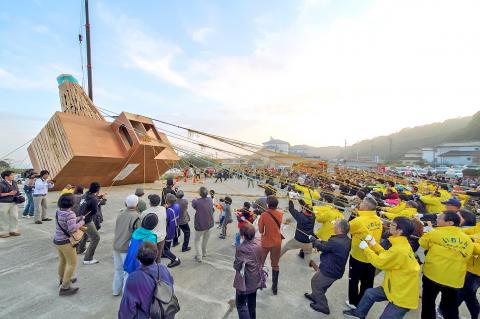
Photo courtesy of MUJIN-TO Production
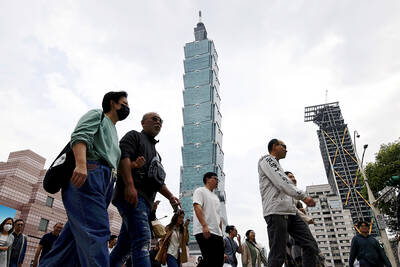
In the March 9 edition of the Taipei Times a piece by Ninon Godefroy ran with the headine “The quiet, gentle rhythm of Taiwan.” It started with the line “Taiwan is a small, humble place. There is no Eiffel Tower, no pyramids — no singular attraction that draws the world’s attention.” I laughed out loud at that. This was out of no disrespect for the author or the piece, which made some interesting analogies and good points about how both Din Tai Fung’s and Taiwan Semiconductor Manufacturing Co’s (TSMC, 台積電) meticulous attention to detail and quality are not quite up to

April 21 to April 27 Hsieh Er’s (謝娥) political fortunes were rising fast after she got out of jail and joined the Chinese Nationalist Party (KMT) in December 1945. Not only did she hold key positions in various committees, she was elected the only woman on the Taipei City Council and headed to Nanjing in 1946 as the sole Taiwanese female representative to the National Constituent Assembly. With the support of first lady Soong May-ling (宋美齡), she started the Taipei Women’s Association and Taiwan Provincial Women’s Association, where she
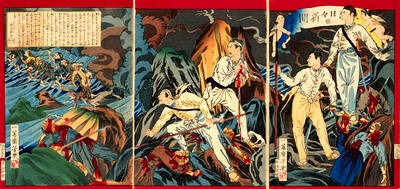
It is one of the more remarkable facts of Taiwan history that it was never occupied or claimed by any of the numerous kingdoms of southern China — Han or otherwise — that lay just across the water from it. None of their brilliant ministers ever discovered that Taiwan was a “core interest” of the state whose annexation was “inevitable.” As Paul Kua notes in an excellent monograph laying out how the Portuguese gave Taiwan the name “Formosa,” the first Europeans to express an interest in occupying Taiwan were the Spanish. Tonio Andrade in his seminal work, How Taiwan Became Chinese,
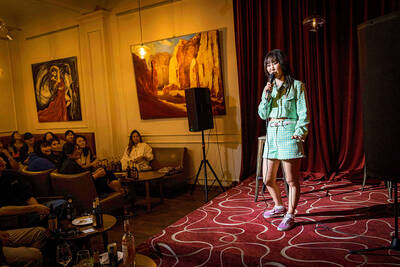
Mongolian influencer Anudari Daarya looks effortlessly glamorous and carefree in her social media posts — but the classically trained pianist’s road to acceptance as a transgender artist has been anything but easy. She is one of a growing number of Mongolian LGBTQ youth challenging stereotypes and fighting for acceptance through media representation in the socially conservative country. LGBTQ Mongolians often hide their identities from their employers and colleagues for fear of discrimination, with a survey by the non-profit LGBT Centre Mongolia showing that only 20 percent of people felt comfortable coming out at work. Daarya, 25, said she has faced discrimination since she